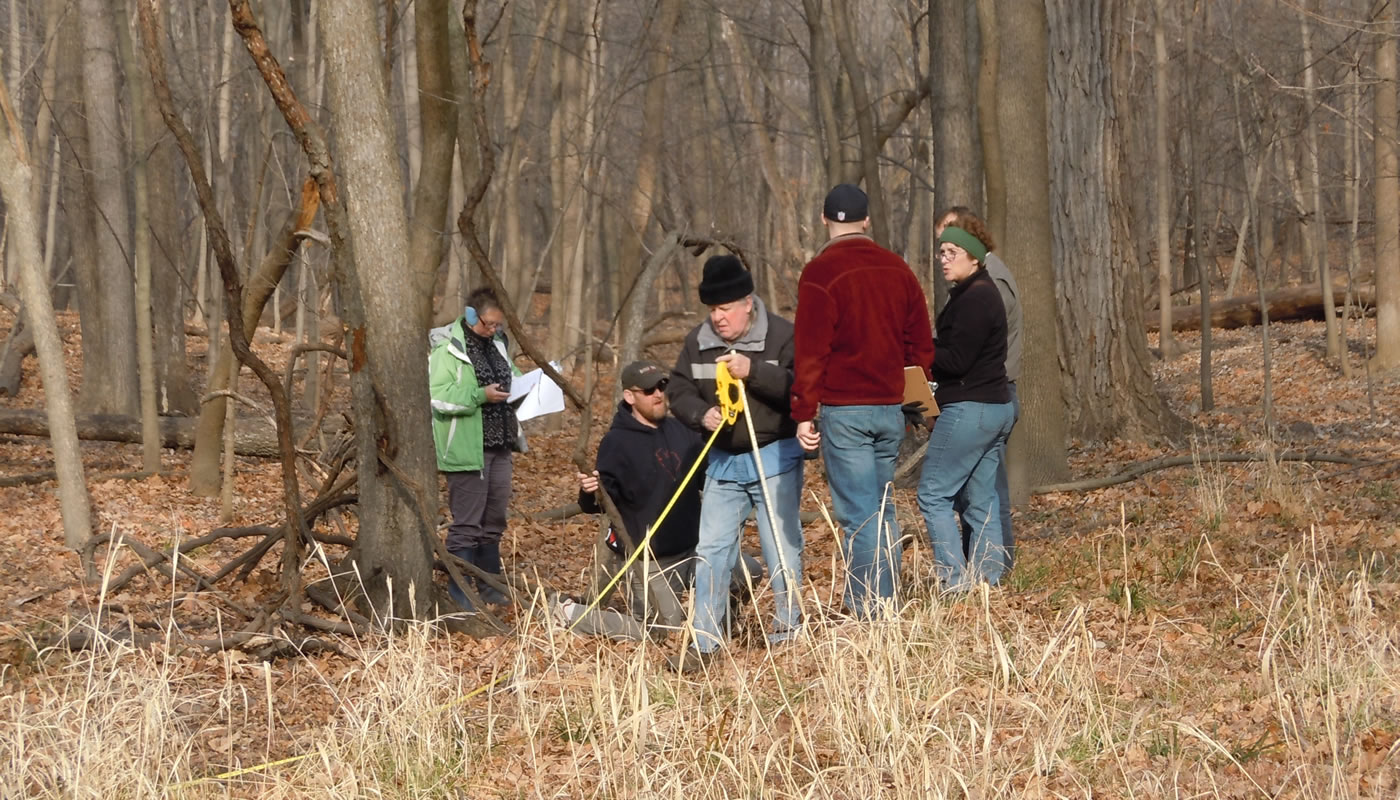Though the name “Gully Walkers” vaguely suggests a band of restless apparitions or the title of a Disney movie, it’s really Friends of the Chicago River’s newest volunteer opportunity, and a unique way to care for the forest preserves and the Chicago River at the same time.
Gullies are small-scale canyons—ditches, for the less poetic—carved into soil by water traveling downhill. Some gullies are natural and eventually form valleys, canyons, ravines and other formations. However, in our hardened urban landscape, where buildings and pavement prevent water from being absorbed into the ground, an unnaturally high volume of water runs into the forest preserves from many adjoining properties, often concentrated by pipes, to create damaging gullies. These gullies can carry sediment and polluted surface water on a fast-track into the river, without the benefit of being filtered through the ground first.
With Gully Walker trainings beginning this past fall, a new group of volunteers are now patrolling the Cook County forest preserves along the Chicago River, searching for developing gullies. “This is a great way to get excited about citizen science, and to get out to the river on a regular basis,” says Betsy Hands, Friends’ Director of Outreach and Community Relations. “Volunteers choose their own time and schedule, and most of the job is as simple as taking a stroll through the woods.”
“You can do this any month of the year, as long as you’re an intrepid volunteer,” says Hands. “Right now is actually the best time of year, because it is easier hiking—as long as there is little snow–and you can follow the longer gullies and see and measure the extent of their reach.”
The program builds upon restoration work the Friends of the Chicago River is already conducting with the Forest Preserve District. “We have active restoration projects going on at Edgebrook and Kickapoo Woods,” says Hands, “but we recognized the need to look at the entire watershed and river system.” Friends has set out to identify, classify and map gullies along 50 miles of riverside preserves. “We’re focusing on the forest preserves because that’s where land is accessible,” she says.
Gully Walkers volunteers go through four hours of training, learning how to spot and assess a gully in the field, how to use a GPS device and how to record data. “When you get out there and do a walk and see real-world examples of gullies,” says Hands, “it gives people a much better sense of how a watershed operates in the city. People grasp the importance of having permeable surfaces, and how we now have to manage runoff in the forest preserves.”
Ultimately, the Friends of the Chicago River will present a final report ranking gullies by their impact on the river and mapping each gully in detail. The data they collect will help identify areas most in need of restoration, which may include planting native species and naturalizing gully slopes. “We’ve given ourselves two years to get it done,” says Hands, “but the way volunteers tear into it, it could take much less time.”
Learn more and sign up to be a Gully Walker with the Friends of the Chicago River.

